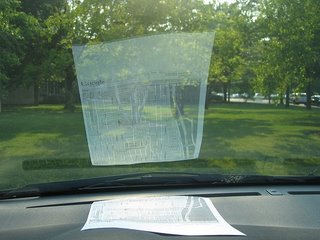"After being Turned Down by numerous Publishers, he had decided to write for Posterity." - George Ade
Writing books are all the craze now-a-days. I've heard that 75,000 books are published each year and it is easier than ever to do it yourself. There are now a host of companies that will allow you to self-publish and print on demand. Some popular ones include
Xlibris (owned by Random House),
BookSurge,
cafepress, or
iUniverse. To read on how to approach a project like this, see
Seth Godin's Advice to Authors.
I have a friend, Jerry Dawson, who a few year's back published his own book,
Sales 101: Princples in Action. I recently asked him about the process and I thought I would share his insights here.
What made you want to write a book?My sales experiences were varied enough and I thought what I had learned was worth sharing.
How did you go about writing and publishing the book?The self-publishing process is the same as going through a traditional publisher, except I had total control over the content, length, and organization of the book. I worked with
BookSurge, which was purchased by Amazon, which provided great exposure for the book right out of the gate. That said, it is left to me to market ths book. I have been marketing the book mostly by giving copies to friends and associates. The response to the book has been very positive. I spent under $1,000 to publish the book and get the first 100 copies. Although I have yet to turn a profit, the book is selling.
What was the most surprising thing about the process?Just how hard it was to write the book. I spent over two years collecting my thoughts and writing up small snippets and then hours and hours of editing and re-writing to complete the book.
What advice would you have for other would-be authors?Only to focus completely on what you are writing about – get a good editor so you don’t waste words – solicit the opinions of others when appropriate – keep it simple.
One of these days I will write and publish a book or two. For now, the ideas go into folders and I blog on. If you are like me, but don't want to wait, you might check out Andy Wibbel's program entitled "
Write a Book in 45 Days and Other Ways to Blow Your Own Mind." As he so aptly put it: "shut up and write" and sometimes a little structure is what we need to get us going.
So, that is my advice to would-be-authors. Start already!
 So, I saw this do-it-yourself automotive head's up display and it made me smile. For those of you who haven't kept up on these things, having a display embedded or projected onto a windsheild of a car has been talked about for decades. This low-tech approach is not perfect for all conditions of course. It works great if dynamic data wasn't required and the lighting conditions are right. Even with these limitations, it does remind me that often we overthink solutions when a workable and cheap idea is right in front of us!
So, I saw this do-it-yourself automotive head's up display and it made me smile. For those of you who haven't kept up on these things, having a display embedded or projected onto a windsheild of a car has been talked about for decades. This low-tech approach is not perfect for all conditions of course. It works great if dynamic data wasn't required and the lighting conditions are right. Even with these limitations, it does remind me that often we overthink solutions when a workable and cheap idea is right in front of us!






